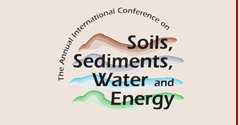Article Title
Abstract
The potential health risk from exposure to chemically contaminated soil can be assessed from bioavailability studies. The aims of this research were: (a) to determine the dermal bioavailability of contaminants in soil for representatives of the polycyclic aromatic hydrocarbon class of chemicals, namely, benzo(a)pyrene and naphthalene, and (b) to examine the relative contribution of soil matrix and chemical sequestration in soil with time (“aging”) on their bioavailability. In vitro flow-through diffusion cell studies were performed utilizing dermatomed male pig skin and radioactive chemicals to measure dermal penetration. Volatilization of naphthalene was predominant in reducing the amount of chemical available for dermal penetration. Immediate contact with either of two soils reduced volatilization, however, only the soil with higher clay content resulted in reduced penetration. Aging in higher sand content soil and higher clay content soil further reduced skin penetration by 23 and 70 fold, respectively, versus naphthalene in the absence of soil. Benzo(a)pyrene penetration was reduced >88% following immediate contact with either soil with further reductions occurring after aging. While aging in either soil reduced the dermal penetration of both naphthalene and benzo(a)pyrene, the effect on naphthalene was much greater. The results of this study suggest that the bioavailability from dermal exposure to the polycyclic aromatic chemicals examined can be significantly reduced by soil matrix and aging in soil, resulting in reduced potential health risk following dermal exposure.
Recommended Citation
Turkall, Rita M.; Skowronski, Gloria A.; and Abdel-Rahman, Mohamed S.
(2010)
"Effects Of Soil Matrix And Aging On The Dermal Bioavailability Of Polycyclic Aromatic Hydrocarbons In The Soil,"
Proceedings of the Annual International Conference on Soils, Sediments, Water and Energy: Vol. 14, Article 23.
Available at:
https://scholarworks.umass.edu/soilsproceedings/vol14/iss1/23
